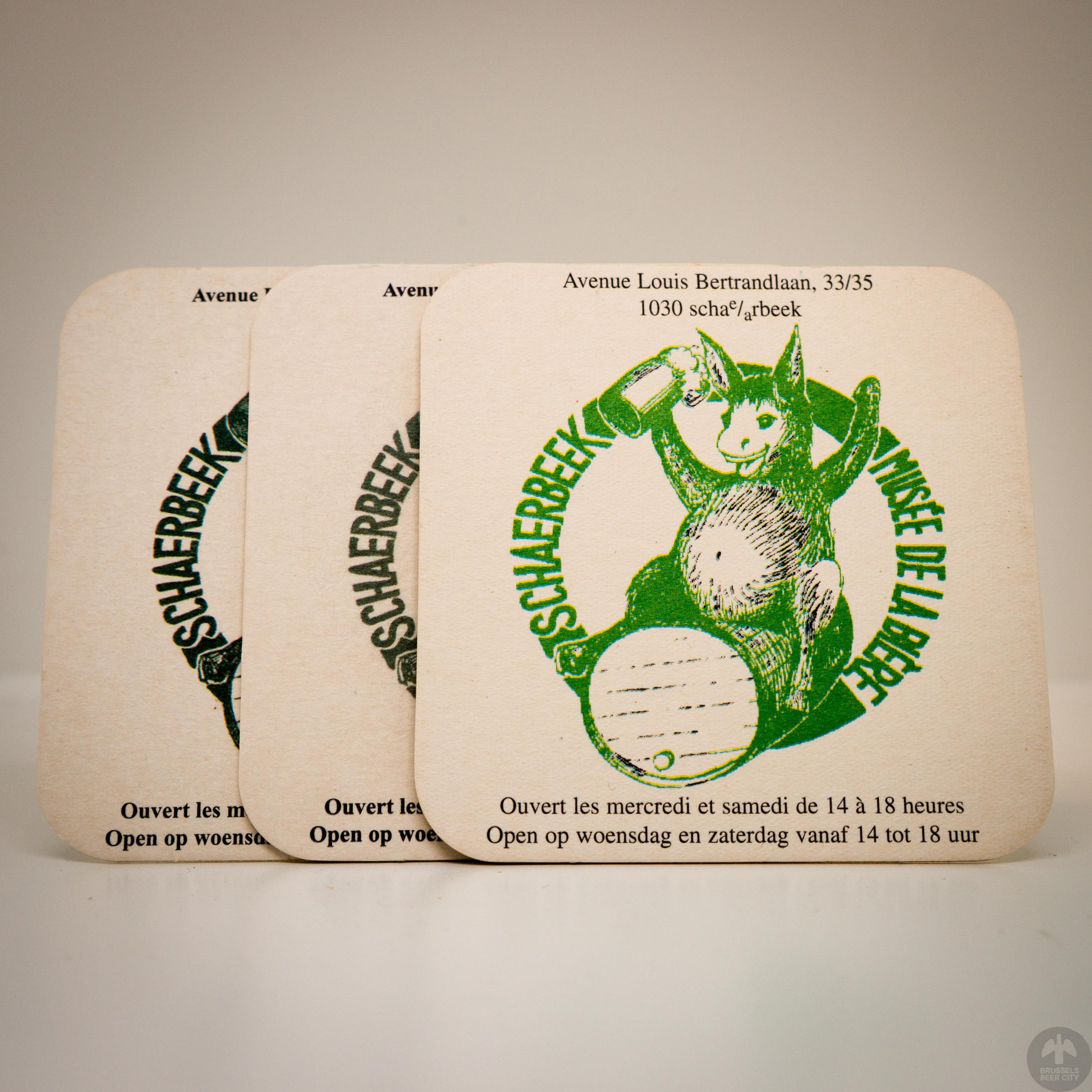A History of Brussels Beer in 50 Objects // #34 Musée De La Bière Schaerbeekois Beer Mats
Object #34 - Musée De La Bière Schaerbeekois Beer Mats
20th century
City Life
Find out more about Brussels Beer City’s new weekly series, “A History Of Brussels Beer In 50 Objects” here.
The ‘70s and early ‘80s were turbulent for Brussels’ brewers, with closure after closure thinning their numbers. But the sector reached its real low ebb in the early 1990s. The end of Vorst’s Brasserie Wielemans-Ceuppens in 1988 left Lambic-producing Brasserie Belle-Vue as Brussels’ last remaining industrial brewery. In 1991 Wielemans’ owners Interbrew, Belgium’s biggest brewery, took control of Belle-Vue. Within five years ceased brewing at their Molenbeek brewery and leaving nearby Brasserie Cantillon as the last Brussels brewery standing.
March 1994 seems, then, like an inauspicious moment for the arrival in the city of the Musée de la Bière Schaerbeekois. The beer enthusiasts and collectors behind the project could have been forgiven for thinking that, rather than a museum celebrating Brussels’ (and Belgium’s) beer heritage, they were about to open a mausoleum to a recently-deceased culture. Schaarbeek would have been a good choice for either endeavour. Home in the early 1900s to 13 breweries and cherry orchards producing fruit for Brussels’ Kriekenlambiek, by the 1990s all that was left of this tradition was L’Ordre de la Griotte, a society honouring the neighbourhood’s cherry harvesters founded by local alderman Claude Paulet.
Paulet was also behind the museum. He secured a location in the former ateliers of an abandoned technical school not far from Schaarbeek’s Josaphat park, where the museum’s founders could install their collection of Belgian breweriana and brewery equipment. In early 1994 burly men in sweat-soaked shirts heaved bottling machines and brewing kettles into various rooms, and in the main exhibition area they placed a Wielemans dray cart complete with red livery, beer barrels and a dummy in the driver’s seat.
Another room was converted into the Vieux Schaerbeek (“Old Schaarbeek”), recreating a classic 1920s Brussels estaminet, featuring games like pitjesbak, and vogelpik, a royal decree from November 1939 outlawing drunkenness, a charcoal stove, and a pair of mannequins (one a notary, the other his mistress) sitting down for a bottle of Gueuze Belle-Vue.
Shelves were filled with thousands of bottles and beer glasses from breweries around Belgium. In glass cabinets were placed yellowing newspaper ads, beer label stencils, coasters, tap handles topped with golden elephants, brewer’s medallions, and share certificates from long-defunct Brussels breweries. On the walls they affixed enamel advertisements and the backlit electric signs that replaced them. In one corner was a library, featuring old copies of Le Petit Brasseur announcing the death of Louis Pasteur. In another they installed a small bar serving their house beer - called Schaerbeekoise but made, in the absence of local breweries, 95 kilometres away at Brasserie de l'Abbaye des Rocs.
Much of the museum’s collection was already distant history in 1994, and it hasn’t shaken off its melancholic air in subsequent years. But it hasn’t quite been suspended in aspic. The volunteers have continued growing their collection to reflect Belgium’s late-20th century beer revival. And these days the museum café can even offer visitors a glass of Brussels-brewed beer - their Eizelskop tripel coming from Nanobrasserie L’Ermitage in slightly less distant Anderlecht.













